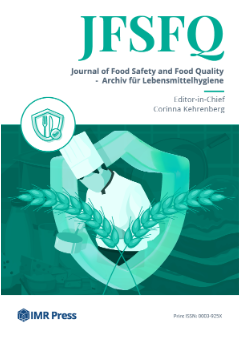Journal of Food Safety and Food Quality (JFSFQ) is published by IMR Press from Volume 76 Issue 1 (2025). Previous articles were published by another publisher under the hybrid model (CC-BY license or on a subscription basis), and they are hosted by IMR Press on imrpress.com as a courtesy and upon agreement
Using grey and regression prediction models to estimate the aerobic plate bacteria counts on frozen squid rings (Loligo Vulgaris Lamarck, 1798) during the thawing process
Die Grau- und Regressionsvorhersagemodelle zur Schätzung der aeroben Plattenbakterien von gefrorenen Tintenfischringen (Loligo vulgaris Lamarck, 1798) beim Auftauen
Fevziye Nihan Bulat
Faculty of Fisheries
Fish Processing Technology Department
Ege University
35100 Bornova-Izmir
Turkey
nihanbulat@gmail.com
In this study, grey and regression models were developed to estimate the aerobic plate bacteria development on frozen squid rings during the thawing process. The regression model was found to be suitable for predicting the microbiological growth on frozen squid rings during the thawing process for different temperatures and times (R2adj = 0.918). This model allowed predictions to be made based on time, temperature and treatment factors. The other model developed for the data in this study was grey modeling, which is also used to predict the total aerobic bacteria growth on frozen squid rings during the thawing process. The GM (1,1) model allowed modeling that could only be based on time. Therefore, a comparison of the groups was not possible with the GM (1,1) model, compared to the regression modeling technique. However, the grey model appeared to be a good alternative when there was little data and time-dependent measurements were made. The proposed modeling techniques are be useful for predicting the total aerobic bacteria growth on frozen squid rings during the thawing process because they are economical and timesaving.

